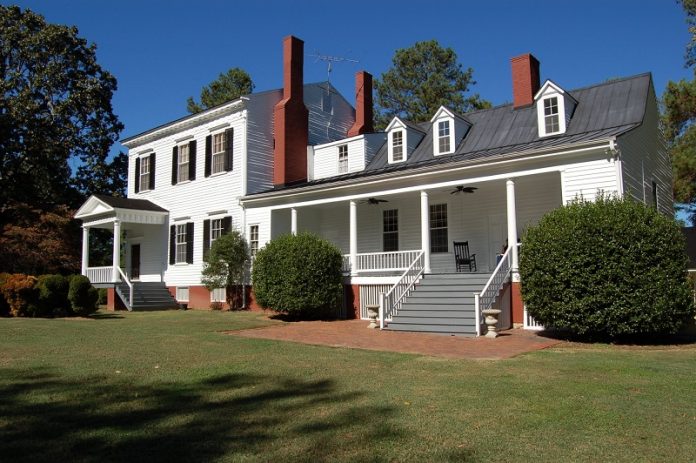Did you know that over 50% of America’s homes are built in two specific architectural styles? It’s true because 30.7% of US homes are considered bohemian craftsman homes. Meanwhile, 28.7% of homes are in the modern farmhouse style.
There are hundreds of different home styles across the country. That’s why, when it comes time to choose your dream home, it can be hard to decide on just one.
We want to help make your decision a little easier. In this guide, you’ll learn about the most popular home types in the US and what makes each one unique.
Are you ready to learn which house architecture styles are perfect for you and which ones you could live without? Then keep reading, because we’re going to help you do just that.
Table of Contents
Mid-Century Modern Ranch Style
Mid-century modern ranch-style homes are all the rage with middle America. Yet, the aesthetic appeal is obvious to anyone who sees one of these homes. The large windows, abundance of light, and clean lines are pleasing to any eye.
Stemming from the traditional ranch home, the mid-century modern version is known for its wide and low floor plan. Commonly found with an attached garage, these homes are a staple in American suburbs.
You can usually recognize a mid-century modern ranch home by its picture windows and low-pitched roof. Another main feature is the indoor-meets-outdoor feel. Mid-century modern ranch homes often feature patios and windows overlooking large outdoor spaces.
Modern Farmhouse Style
Perhaps the most popular home architecture style on our list, modern farmhouse is a new American favorite. Proponents rave about its pared-down, cozy aesthetic. Families, in particular, are fans of the modern farmhouse’s down-home style.
Updated from the traditional American farmhouse style, modern farmhouse interiors have vaulted ceilings, open floor plans, and updated kitchens. Finishes are rustic and often feature restored barn doors and wide wood plank floors.
Exteriors feature gabled, metal, steep-pitch roofs, or a combination of these. Wraparound porches are common while back porches are more typical. Siding usually includes board and batten or lap materials.
Tudor Style
Toward the end of the 1800s, the US saw an explosion of homes built in the Tudor style. Tudor style is inspired by medieval and Rennaissance-era European architecture. That’s why these homes feature the asymmetry and eclectic building traditions of old.
Tudor style homes aren’t cheap to build because they feature decorative stone and brick craftsmanship. They’re recognizable by their steep gable roofs and elaborately decorated chimneys.
These homes are all about traditional craft. Exposed beam framework and artfully arranged window designs speak to this quality. Tudor-style finishing touches for these homes include archways, black metal hardware, and even cut stone set into brick.
Spanish Colonial Style
Spanish colonial-style homes are less common in the north and midwest. They’re more popular with southern and southwestern American homeowners. Considering that these homes feature thick walls of stucco, it’s no wonder they’re common in hot climates.
These Spanish-inspired homes are easy to spot. They’re made of stark white stucco and typically feature red barrel tile roofs. Spanish colonial homes could be square and a few stories or L-shaped and low to the ground.
California first made Spanish colonial homes popular. The state also contributed to one of this style’s most common elements: the second-story wraparound porch. Also featuring enclosed courtyards, Spanish colonial-style homes are perhaps the most unique architecture style on our list.
Bohemian Craftsman Style
For homeowners who want to harken back to the days of artisans, there’s the bohemian craftsman architecture style. This style combines two American favorites: bohemian bungalow style with traditional British craftsmanship.
It’s hard to pin down a bohemian craftsman style home, but that’s one of its most important features. All craftsman-style homes are unique. Though, they do share common elements like covered porches, double-hung windows, and dormers.
Bohemian craftsman interiors feature handmade fireplaces, quaint nooks, and window seats. They often showcase surprising colors and eclectic furniture. Plus, bohemian craftsman homes bring the outdoors in with lots of colorful plants.
French Chateau Style
If you’ve ever wanted to live in a castle, your dreams can come true with a French chateau-style home. Also known as chateauesque, American builders based this style on medieval French country homes.
Chateauesque homes are most notable for their sheer size. These monstrous homes often feature a main house with an attached coach house or garage apartment. They showcase complicated rooflines, recessing facades, and castle-worthy turrets.
If you don’t think you can afford your dream chateau-style home, think again. A mortgage company can help you find the home you’re dreaming of at a price that won’t break the budget.
Italianate Style
Italianate architecture first rose to popularity in the US in the 19th century. Northerners tended to favor this home construction style, which is modeled after the Italian villas in Europe. Yet, putting your finger on exactly what it means to be Italianate is complex.
This style of home is less defined by its size than by its shape and ornamentation. Italianate homes are usually rectangular or square in shape and have only two or three stories. They feature tall and ornate windows, columns at the entries, and cupolas (square towers jutting from the roof).
Another main feature of an Italianate home is its gently sloping roof. Decorative trims (called corbels) usually edge these roofs. And the exterior is typically constructed with brick, stone, or, more commonly, stucco.
Different Home Styles in America
The top different home styles in the US include favorites, modern farmhouses, and mid-century modern ranches. French chateau, Spanish colonial, and Italianate-style homes add a European flair to American homes. Meanwhile, bohemian craftsman and Tudor architecture harken back to early American days.
Loved learning about the different home styles in America and want more educational content just like this? Then check out our other blog articles now.



















